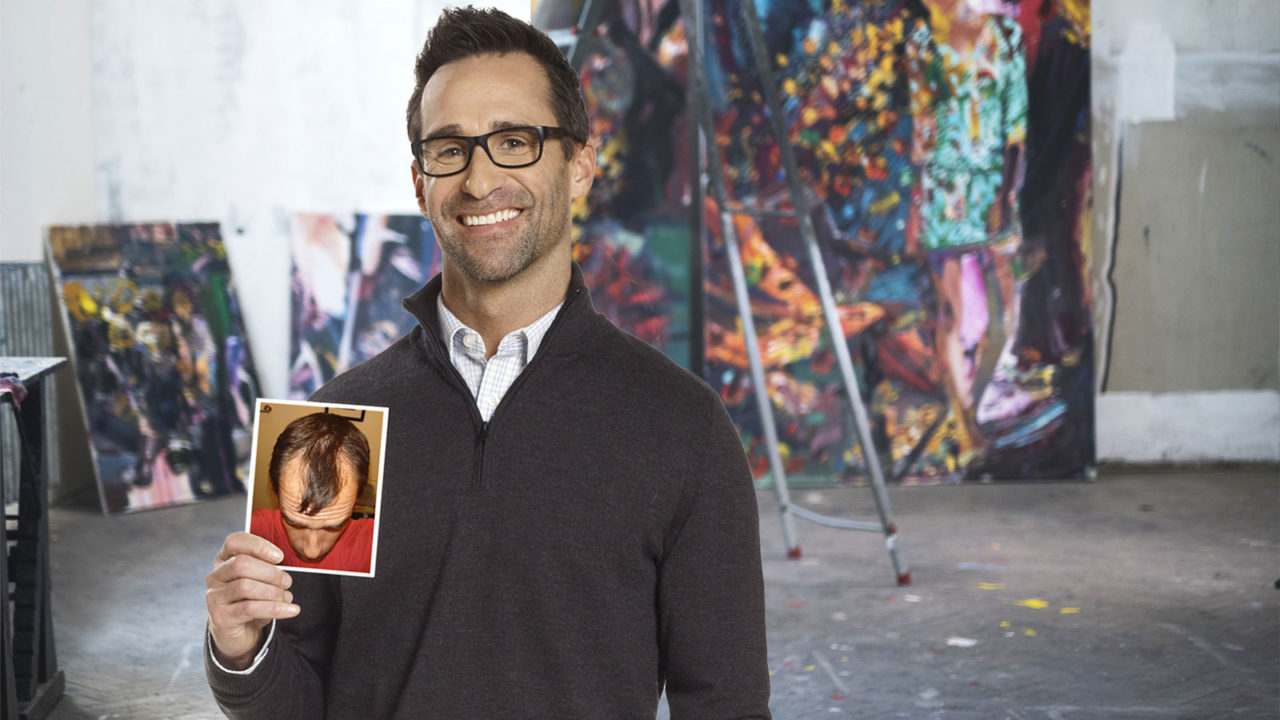You Can’t Stop Hair Loss On Your Own
Approaching 50, a Denver-based art director looked to the Hair Sciences Center of Colorado to give him a full head of hair—and a more youthful appearance.
As an art director running his own freelance business, Doug Mazza is used to being in charge. But even the most effective leader can’t always control his hair, and Doug’s was receding rapidly, leaving much of the front of his head bald.
He’d thought about looking into how to fix, and hopefully reverse, the issue, but hadn’t taken any steps yet. Then his barber told him he’d be a perfect candidate for a hair transplant. As luck would have it, a work colleague was connected to Dr. James Harris, director of the Hair Sciences Center of Colorado (HSC) in Greenwood Village. Mazza made an appointment.
From the initial consultation, it was a pretty quick process to having a thick head of hair. At that first meeting, Dr. Harris drew a new, suggested hairline on Mazza’s scalp, and they agreed on the updated look. Mazza’s surgery was scheduled for a few months later. “I [wanted] to go to somebody I liked and trusted, and I know Dr. Harris is a leader in this industry,” Mazza says about why he decided to move forward with HSC.

Dr. Harris is an internationally recognized hair transplant surgeon who has successfully performed thousands of hair restoration procedures. He is best known for his innovative solutions to hair loss, like helping to develop the ARTAS® robot, which uses algorithms to select the precise hair follicles to create the best results for each patient. At HSC, patients have access to a wide variety of services, including eyebrow transplants, eyelash transplants, beard and mustache transplants, and non-surgical hair restoration treatments. (See how it all works with these hair transplant before-and-after photos.)
Dr. Harris thought the best approach to address Mazza’s concerns would be the Follicular Unit Strip method, so named because a strip of hair is removed from a different section of the head (in Mazza’s case, the follicles were pulled from the back of his noggin) and the grafts are transplanted onto the balding or thinning areas. It’s a less expensive option and one that can be particularly effective for combating male or female pattern baldness and high hairlines. “Dr. Harris was very open about the process. He explained it very well,” Mazza says. “His staff is very professional.”

Mazza was given local anesthesia but wasn’t put under during the painless, daylong surgery. “I could go out a day after and people wouldn’t even notice,” he says. About four years later, Mazza repeated the surgery to add some more thickness. “It was life-changing,” he says today. “I look younger. I look better. I have a nice head of hair. You feel better about yourself.”
Mazza has since recommended Dr. Harris to a number of friends and acquaintances, citing the quick and easy process. There’s no visible scarring on the Boston native’s scalp, and he finds people are surprised when he tells them he had work done on his hair. “I’m incredibly proud of it… I get compliments on my hair all the time from strangers. I tell them I’ve had a hair replacement, and they can’t get over it,” he says. “It looks incredibly normal.”
Get In Touch: Do hair transplants work? View some hair transplant before-and-after photos on the HSC website. Or, if you’re concerned about hair loss, contact Dr. Harris for a consultation by calling 303-694-9381 or filling out the online contact form. Learn more about the hair restoration process by following HSC’s YouTube channel.
5445 DTC Parkway, Suite 1015, Greenwood Village


